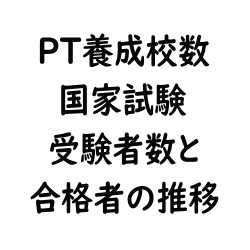目次
加齢に伴う股関節周囲における軟部組織の硬度と
大腿骨近位部骨折リスクとの関連
大腿骨近位部骨折が起こる原因として骨粗鬆症が挙げられますが,以前から加齢に伴う軟部組織硬度が大腿骨近位部骨折リスクを上昇させるのではないかと考えられてきました.
軟部組織硬度は理学療法によっても改善可能な要因ですので,軟部組織硬度が大腿骨近位部骨折リスクとの関連性が明らかになれば,理学療法士が軟部組織の柔軟性を改善させることで,骨折予防を図るとことが可能になると思います.
今回は加齢に伴う股関節周囲における軟部組織の硬度と大腿骨近位部骨折リスクとの関連を明らかにした研究報告をご紹介いたします.
今回ご紹介する論文
J Biomech. 2019 Jun 7. pii: S0021-9290(19)30398-7. doi: 10.1016/j.jbiomech.2019.06.002. [Epub ahead of print]
Soft tissue stiffness over the hip increases with age and its implication in hip fracture risk in older adults.
Lim KT, Choi WJ
今回ご紹介する論文は2019年に掲載された新しい内容です.
研究背景および目的
Risk of hip fracture depends on the bone strength as well as the impact force delivered to the proximal femur during falls, and femoral soft tissue may help to reduce the hip fracture risk by attenuating the impact force. Femoral soft tissue stiffness was measured from a large sample, and compared how this was affected by age, gender and site.
大腿骨近位部骨折のリスクは,骨強度のみならず転倒時の大腿骨近位部に伝達される衝撃力の大きさによっても影響を受けます.
そのため大腿骨近位部の軟部組織の柔軟性が衝撃力を軽減させる可能性があります.
研究の方法
One hundred fifty healthy individuals (fifty-two young (aged between 19 and 29), forty-eight middle-aged (30-64), and fifty old (over 65)) participated. Each age group included an equal number of males and females. Using an automated hand-held indentation device, soft tissue stiffness was measured over twelve sites with respect to the greater trochanter (GT).
この研究では150例の健常成人(19~29歳の52例の若年成人,30~64歳の48例の中年成人,65歳以上の50例の高齢者)を対象としております.
それぞれの年代グループで同数の男性・女性をリクルートしております.
automated hand-held indentation deviceを用いて,大転子に関連する12か所の軟部組織硬度を測定しております.
研究の結果
For both left and right hips, the stiffness was associated with age (p<0.0005), gender (p<0.0005), and site (p<0.0005). On average, the stiffness was 26% greater in older than young adults (321.5 versus 254.3N/m). On average across twelve sites, the regression analysis indicated that the stiffness increases 1.33N/m every year (“soft tissue stiffness over the hip=1.33*age+221.8,R2=0.518, p<0.0005). Furthermore, the stiffness was 18% greater in male than female (308.8 versus 262.6N/m), and differed across twelve sites over the hip, being greatest (424.2N/m) at the GT, and least (206.3N/m) at the superior gluteal region.
左右の股関節において軟部組織硬度は年齢,性別,測定部位と有意な関連を認めております.
平均すると軟部組織硬度は若年者群に比較して高齢者群で26%高い結果でありました.
12の部位の平均値でみると,重回帰分析の結果,1歳年齢を重ねるごとに1.33N/m増加する計算となります.
さらに女性よりも男性で軟部組織硬度が18%高く,測定した12の部位の間でも軟部組織硬度に相違があり,特に大転子部の軟部組織硬度が最も高く,上殿部で最も軟部組織硬度が小さい結果でありました.
この研究の結論
The results provide insights into the shock absorbing property of soft tissue over the hip, and inform the improvement of fall-related injury prevention interventions (i.e., hip protector, safe landing strategies) in older adults.
この研究結果から転倒時の衝撃を吸収する股関節周囲の軟部組織の重要な役割が示唆され,高齢者の転倒関連外傷を予防する上では軟部組織硬度に着目することが重要であると考えられます.
今回は加齢に伴う股関節周囲における軟部組織の硬度と大腿骨近位部骨折リスクとの関連を明らかにした研究報告をご紹介いたしました.
理学療法士が転倒予防に向けた運動指導を行う上では,軟部組織硬度にも着目する必要がありそうですね.







コメント